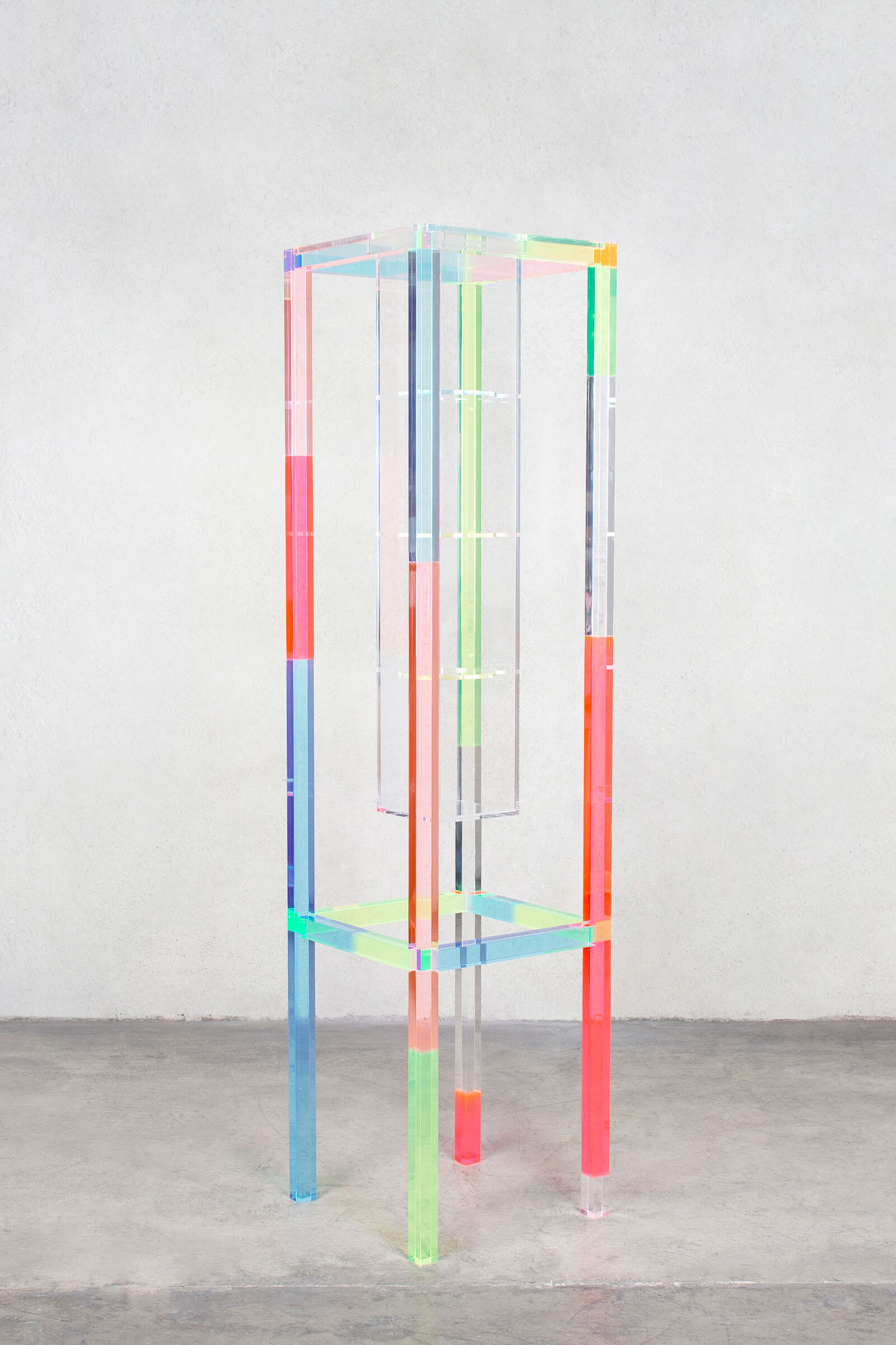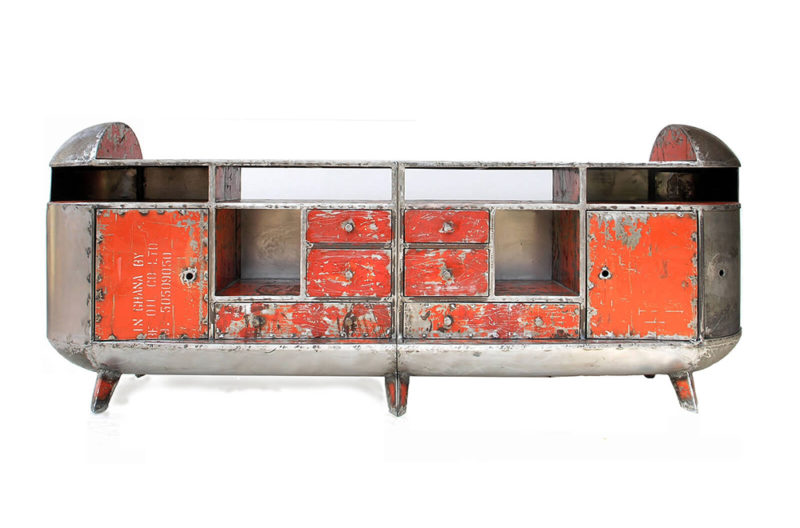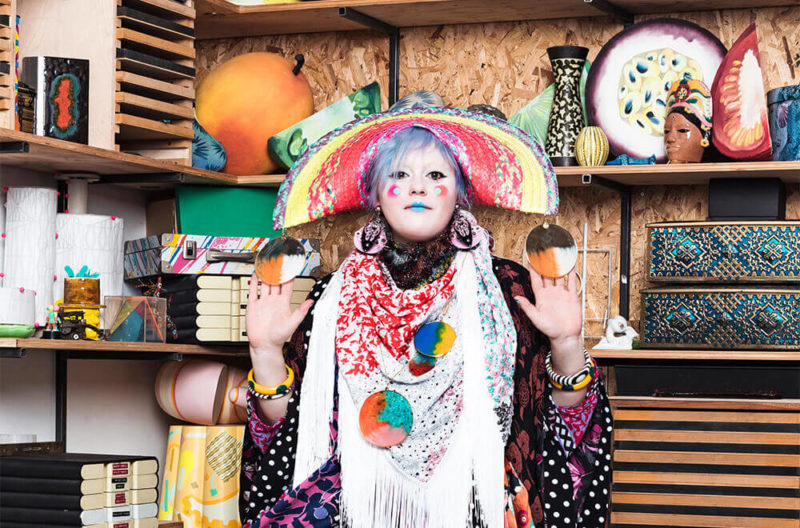‘Cabinet de Curiosité’, 1989
Shiro Kuramata

Shiro Kuramata, ‘Cabinet de Curiosité’, 1989
COURTESY: © Friedman Benda & Shiro Kuramata / PHOTOGRAPH: Daniel Kukla
THIS CABINET TAKES its title from the cabinets of curiosity, or Wunderkammern, that emerged in sixteenth century Europe. Princes would fill ornate repositories with astonishing natural and man-made objects. Here, it is the cabinet itself that is the object of wonder.
The shelves, almost invisible to the eye, allow whatever is displayed on them to float in air, defying gravity. Inspired by his material, the hugely influential post-war Japanese designer Shiro Kuramata here explores the translucency of coloured perspex acrylic, as well as its lightness, while drawing out the expressive potential of its vibrant colour. Kuramata used the Japanese term ‘neiro’, or ‘sound-colour’ to describe the almost musical effect of light passing through the acrylic, to cast spectral colour-shadows. These elusive, poetic qualities contrast with the rigour of the minimalist cabinet’s geometric form.
This is an iconic piece by the designer, an early member of Ettore Sottsass’s design collective, Memphis, who died in 1991 at the early age of 56. It fulfils his dictum that “Function of design should not be just about whether it is practical or not. Enchantment should also be considered as a function.”
This piece of collectible design is on view online this week (from 8th – 15th May) as part of Collective Design Fair’s presentation – Color and Production: From the Atom to the Void – at Frieze New York 2020.
Color and Production: From the Atom to the Void is a selling exhibition curated by Libby Sellers at Collective Design Fair, 8th -15th May 2020.







